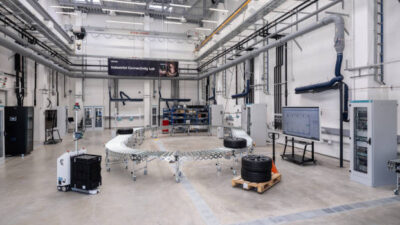Engineering and IT Insight: Companies looking to determine what are information technology (IT) organizations and operations technology (OT) organizations should be focused on what the systems do rather than what they are to solve potential conflicts. See related article topic: IT, OT teams need to work together.

The continuing conflicts between information technology (IT) organizations and operations technology (OT) organizations are not going away, and it doesn’t look like there will be negotiated peace any time soon. The conflicts are taking place in many, maybe most, medium and large manufacturing companies across the whole spectrum of industries such as automotive, aerospace, chemical, life science, consumer products, and oil and gas. IT support organizations are taking responsibility for all computer systems, regardless of use. Support is being centralized, often on different continents and from organizations that have little understanding of OT requirements and even less understanding of automation requirements. See related article topic: IT, OT teams need to work together.
The only systems that are exempt from IT control are programmable logic controllers (PLCs), distributed control system (DCS) servers, and clients, but everything else seems fair game for IT ownership. Most centralized IT organizations will set up a separate priority system for handling production-stopping problems on production equipment. However, IT work required to support the normal day-to-day development work on process improvements, supporting new products, and supporting new work processes usually falls into the IT "we’ll get to it when we have time" bucket.
This often leaves the automation organization in the unfortunate position of appearing to hold up new product introductions, process improvements, and changes to standard work. The automation and OT organizations may have responsibility for the software applications, but they have little to no control over the hardware and infrastructure that their applications are running on. This leads to conflict, as the automation group tries to do their job but is continually stymied by IT policies. Often an "underground" OT organization develops, which leads to "creative" solutions for the problems. These creative solutions result in additional conflict when IT management discovers the workarounds.
The cause of the problem is the rule used to determine which hardware is under the control of IT: "Is it a computer (server or client), and can we pick the hardware, O/S, and database?" If the answer is yes, then IT owns it and is responsible for buying it, installing it, and servicing it. This is why DCS servers and clients are often exempt from IT control because the vendors determine the allowed hardware and infrastructure.
There are often separate subdivisions within IT that will have responsibility for the business applications, such as the enterprise resource planning (ERP) system, office applications, internal and external Websites, and internal and external social media sites. Notice that automation is not on the list of separate subdivisions. That’s because automation is often under the operations organization with no direct ties to IT except at the CEO level.
It would be difficult to design a less effective organization or one that would produce more built-in conflicts. The ownership rule needs to change, or we will continue to see lost manufacturing productivity, late automation projects, dissatisfied operational staff, frustrated automation staff, and IT and OT fighting with each other. Responsibility for systems should not be based on what the system is (It’s a computer!), but what the system does.
If the system supports activities that are critical to plant safety, critical to plant reliability, critical to plant operational efficiency, critical to product quality, or are critical to maintaining product, safety, and environmental compliance, then the entire system should be under the responsibility of the operations department. This includes data historians, data analysis systems, manufacturing execution systems (MES), and laboratory information management systems (LIMS). This includes granting OT a portion of the IT budget used to purchase, install, and maintain the systems.
This is a radical change for most companies, but it is the only way to bring the advances in information technology into operations. It means that IT organizations, within manufacturing companies, need to give up some of their IT budget to OT. A change this sweeping must come from the CEO level and can only happen when the company’s executive management is aware of the incredible costs and losses associated with their current way of doing business. Often the OT’s "shadow" IT organization is not even known at the executive level, which means they are not aware of the problems. However, if a company wants to take advantage of the new capabilities offered by smart manufacturing, Industrie 4.0, or any of the other names given to applying new technologies into manufacturing, they must make these organizational and budgetary changes.
It is not a matter of operating under the same rules that created the current conflict. As Albert Einstein said, "No problem can be solved by the same kind of thinking that created it." The conflict between IT and OT will not go away by just moving all OT functions into the IT organization because OT will get lost in the everyday work of IT in keeping the back office, front office, and remote office workers happy. C-level executives need to realize that the solution is to give OT organizations a seat at the table rather than creating more underground organizations. Those that don’t will fall far behind as other organizations apply the new technologies into manufacturing and reap the benefits.
Dennis Brandl is president of BR&L Consulting in Cary, N.C., www.brlconsulting.com. His firm focuses on manufacturing IT. Contact him at [email protected]. Edited by Chris Vavra, production editor, Control Engineering, CFE Media, [email protected].
ONLINE extra
This posted version contains more information than the print/digital edition issue of Control Engineering.
At Home, search Brandl for more on related topics. See other articles for 2016 at www.controleng.com/archive.
See other Manufacturing IT articles.



